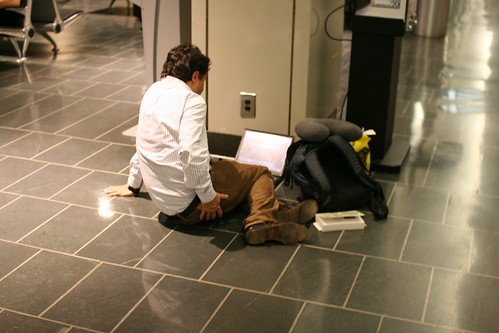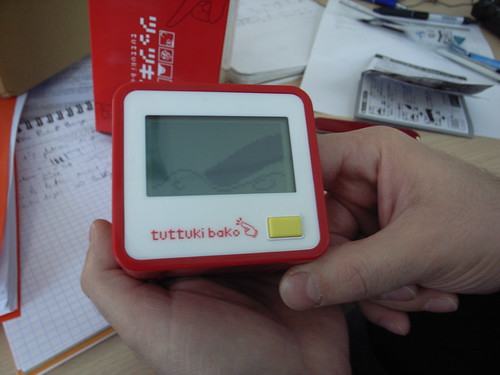 One of the weirdest electronic toy I've played with so far is certainly this "tuttuki bako" (tuttuki box) poking box by BANDAI. It consists in a basic box with a LCD screen, a cute yellow button and a hole on one side of the box. To play the games, you simply have to insert your finger in this hole, and see it appear on the LCD screen.
One of the weirdest electronic toy I've played with so far is certainly this "tuttuki bako" (tuttuki box) poking box by BANDAI. It consists in a basic box with a LCD screen, a cute yellow button and a hole on one side of the box. To play the games, you simply have to insert your finger in this hole, and see it appear on the LCD screen.

Apart from being a basic clock, you have different games as represented on the photo below: poking a panda, removing boogers from someone's face, touching slime or ticking a stick figure character. I actually played with it for sometimes yesterday afternoon at the game studio and it sparked a good discussion about this type of gesture-based interactions.
Why do I blog this? this object is the typical geek magnet as you can see from its presence on tons of blogs about gadgets. Oftentimes, they miss the point and only see the odd character as well as the proximity to old-school tamagotchis. Being interested in electronic toys and their user experience (in a video game project), I try to nail down the interesting aspects of this device.
What's intriguing here is the mode of interaction proposed. Clearly, sticking one's finger in a hole to interact with an object is highly uncommon and almost taboo. Furthermore, it's really about being "engaged" in the interaction physically since you feel that a body part is can be both an input and a somewhat output through the LCD screen.
Second, the vocabulary of interaction of highly interesting. On the physical side: insert, touch, twiddle around inside, stick in, etc. And on the digital side: pushing around a stick figure, ticking someone’s nose, petting a tiny panda bear, etc.
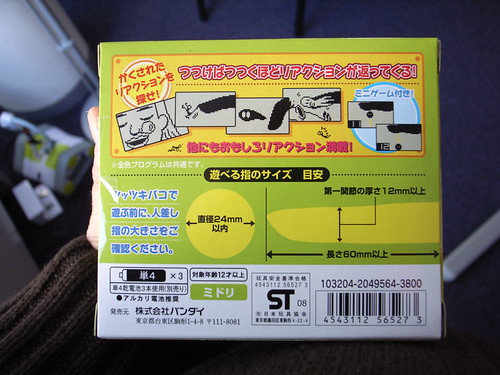
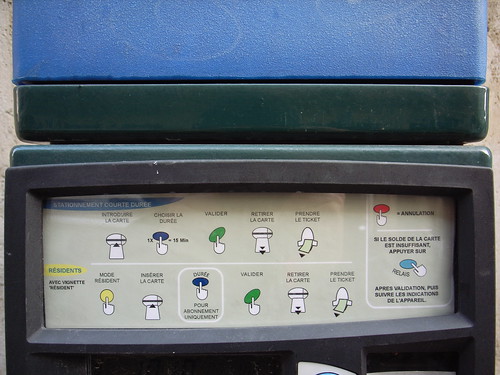
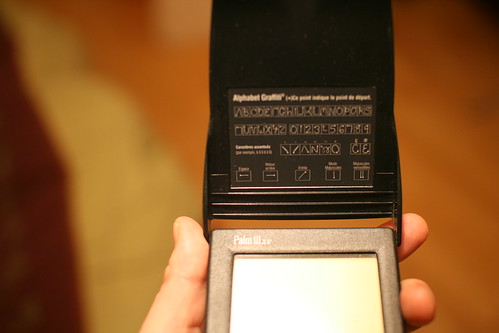

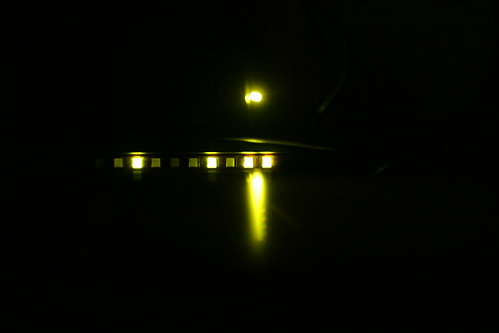


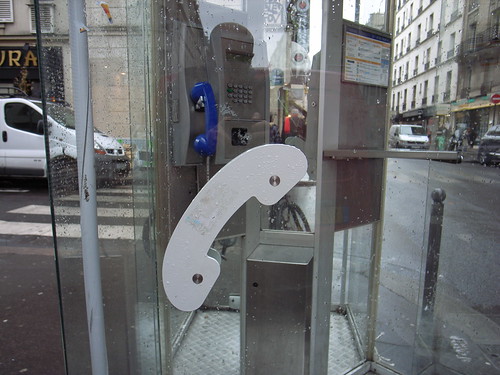



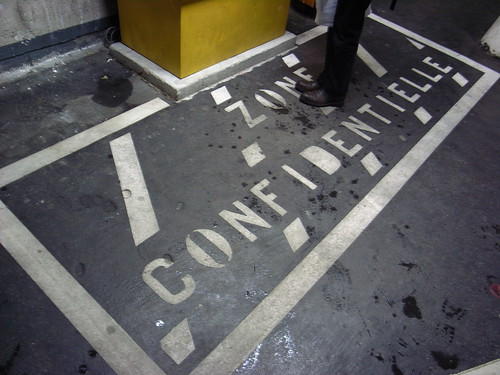
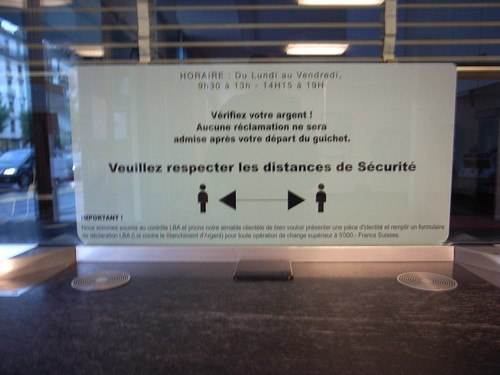
 Quick
Quick 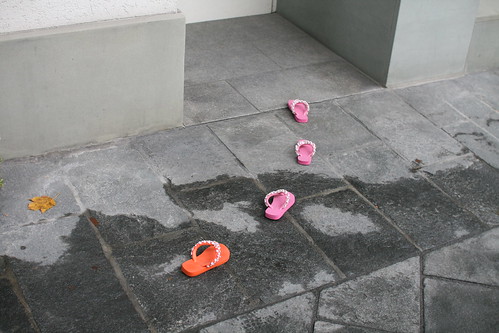



 (picture taken from this
(picture taken from this 
